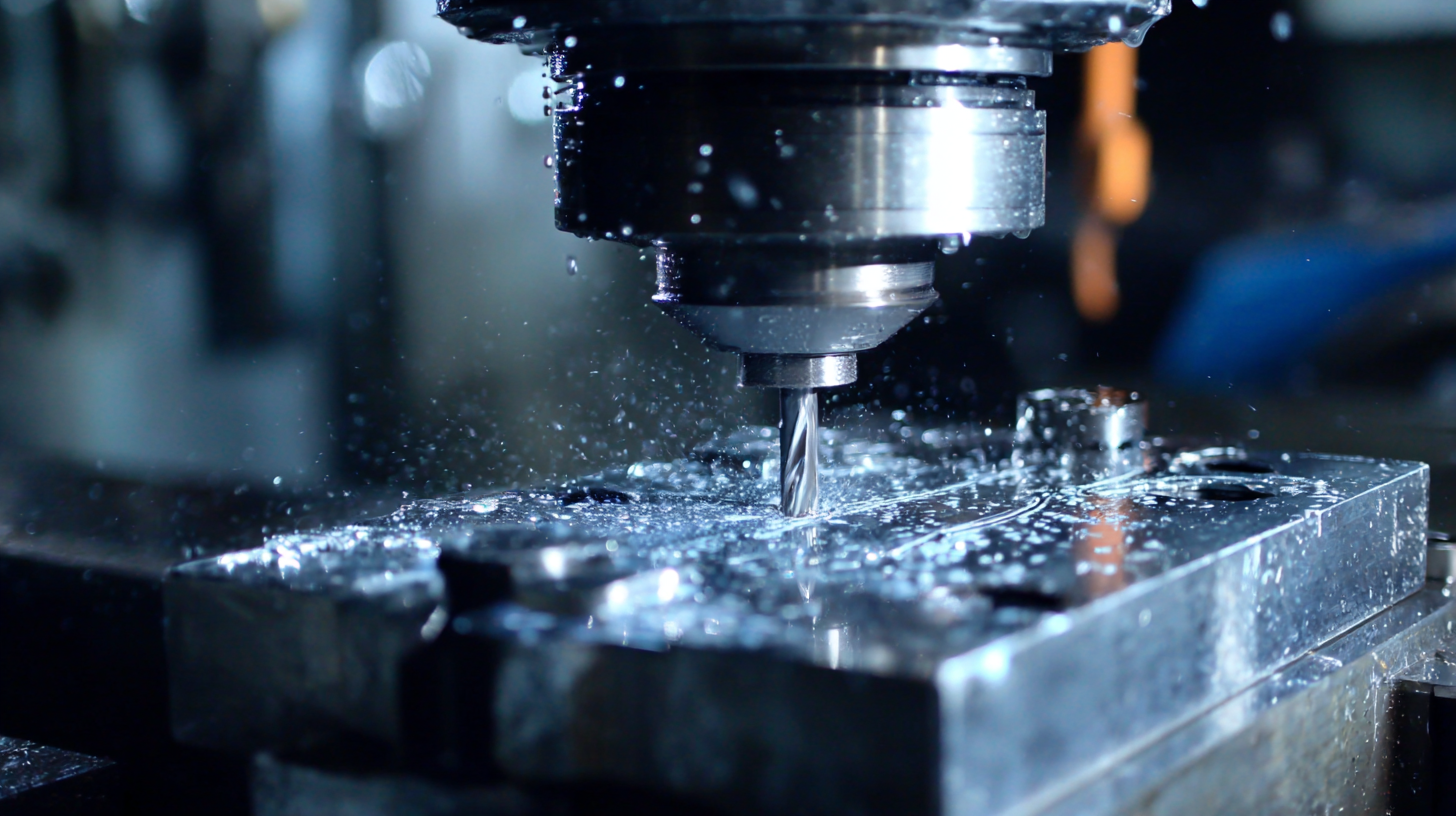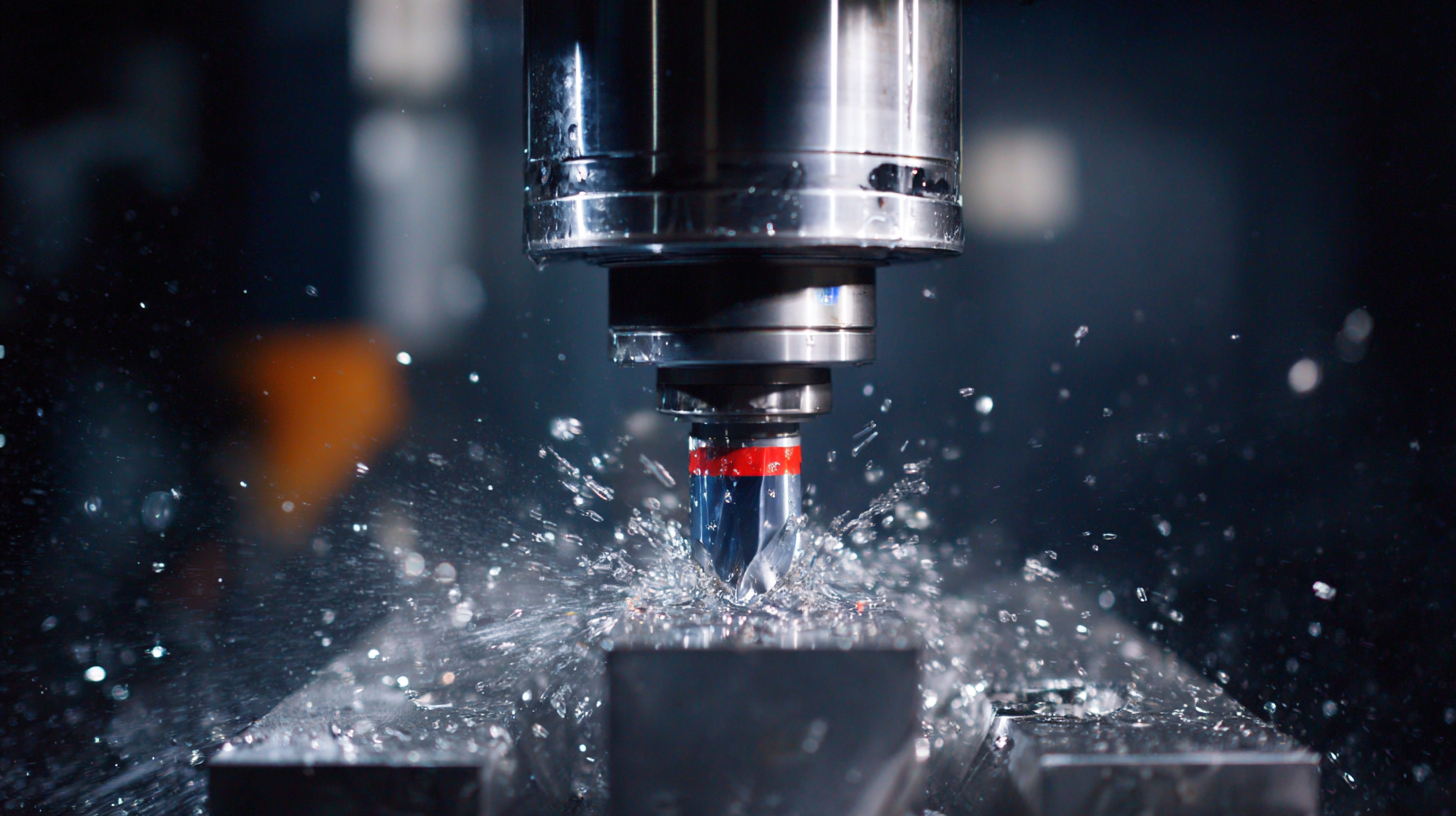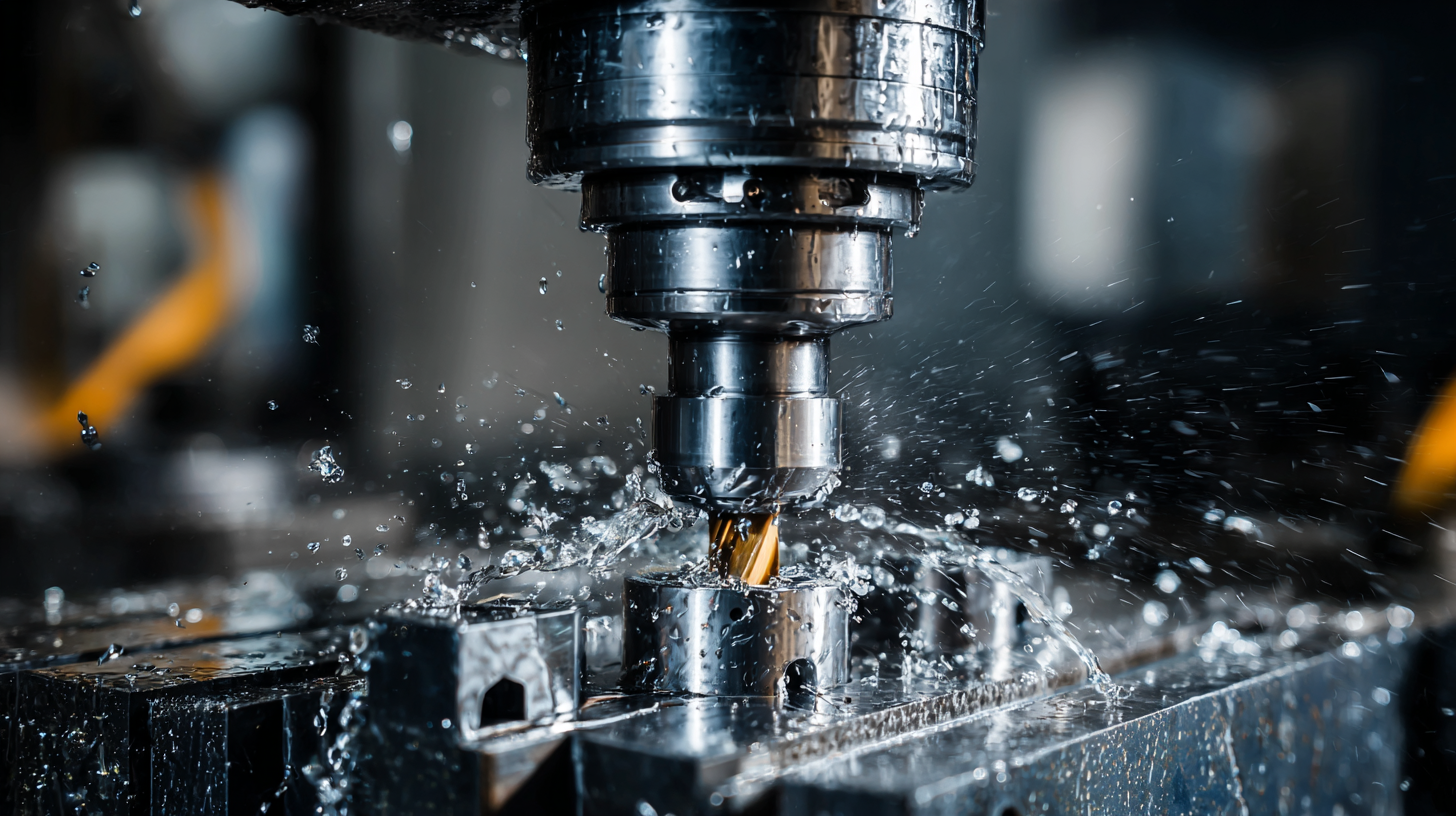Exploring Unique Features and Applications of the Best Rapid CNC Machining Solutions
As we approach 2025, the landscape of manufacturing technology continues to evolve at an unprecedented pace, with rapid CNC machining emerging as a pivotal solution for industries seeking efficiency and precision. According to a recent report by MarketsandMarkets, the CNC machining market is projected to reach $100 billion by 2026, driven by the rising demand for customized parts and rapid prototyping. This growth underscores the importance of rapid CNC machining, which not only reduces lead times but also enhances design flexibility across various sectors, including aerospace, automotive, and healthcare. In this blog, we will delve into the unique features and applications of the best rapid CNC machining solutions, illustrating how they can revolutionize production processes and meet the dynamic needs of modern manufacturing.

Unique Technological Advances in Rapid CNC Machining by 2025
As we approach 2025, the landscape of rapid CNC machining is poised for transformation, driven by unique technological advances. The global CNC machine market is projected to experience significant growth, with its size expected to swell from $101.22 billion in 2025 to $195.59 billion by 2032, representing a compound annual growth rate (CAGR) of 9.9%. This growth is largely fueled by innovations in artificial intelligence and machine learning, which are redefining precision and efficiency within the machining sector.
One of the most promising developments in the field is the integration of advanced robotics and AI, which enhances the automation capabilities of CNC machines. The convergence of these technologies not only streamlines production processes but also enables manufacturers to meet the rising demands for customization and rapid prototyping. Furthermore, the emerging trends in 3D printing and additive manufacturing are set to augment CNC machining. Companies that leverage these technologies are likely to gain a competitive edge, as they can swiftly adapt to market changes and customer needs, positioning them at the forefront of industry evolution.

Revolutionizing Manufacturing: The Impact of Rapid CNC Solutions
The advent of rapid CNC machining solutions marks a pivotal shift in the manufacturing landscape, heralding the era of automation and digital transformation. With the capability to enhance efficiency and streamline production processes, these machines are not merely tools; they represent a significant leap towards realizing the full potential of Industry 4.0. As manufacturers increasingly adopt CNC technology, the market is estimated to witness substantial growth, driven by the demand for precision and speed in production. This transformation enables businesses to respond swiftly to market needs while reducing waste and operational costs.
Furthermore, as manufacturers embrace these cutting-edge solutions, the implications extend beyond operational efficiency. The integration of AI and advanced technologies within CNC machining processes facilitates innovative applications, enhancing product design and development through rapid prototyping. This fusion of traditional manufacturing and digital technologies empowers industries to create more sustainable practices while meeting the evolving demands of consumers. The rapid proliferation of these CNC solutions not only revolutionizes manufacturing but also shapes a more sustainable future, where technology and environmental responsibility go hand in hand.
Exploring Unique Features and Applications of the Best Rapid CNC Machining Solutions
| Feature | Description | Application | Impact on Manufacturing |
|---|---|---|---|
| High Precision | Achieving tolerances of ±0.01 mm. | Aerospace and Medical Components | Enables complex and critical applications. |
| Speed | Rapid production cycles, reducing lead time. | Prototyping and Low-Volume Production | Accelerates product development and time-to-market. |
| Material Versatility | Compatible with metals, plastics, and composites. | Automotive and Consumer Goods | Facilitates design flexibility and innovation. |
| Automation | Integration with CAD/CAM and robotics. | Mass Production | Increases efficiency and reduces human error. |
| Cost-Effectiveness | Reduces costs for small to medium runs. | Startups and Small Manufacturers | Makes advanced manufacturing accessible to more businesses. |
Key Applications of Rapid CNC Machining Across Various Industries
Rapid CNC machining has established itself as a pivotal technology across various industries, driven by its efficiency and precision. The global market for metal forming tools is projected to grow significantly, from $29.41 billion in 2025 to $51.67 billion by 2032, with a compound annual growth rate (CAGR) of 8.4%. This growth is largely attributed to the increasing demand for advanced manufacturing techniques in sectors such as aerospace and automotive, where the need for lightweight yet robust components is paramount.
Applications of rapid CNC machining extend beyond traditional uses, finding their way into innovative fields like 3D printing. The CNC machine tools market alone is expected to see substantial growth from $27.16 billion in 2025 to $44.64 billion by 2033, indicating a CAGR of 6.4%. As industries continue to evolve, the integration of CNC technologies with cutting-edge materials such as aluminum and titanium is enhancing product offerings and performance, contributing to a more agile manufacturing environment that can quickly adapt to changing market demands.
Comparative Analysis: Best Rapid CNC Machining Services Available
As industries evolve, the demand for rapid CNC machining services has surged, particularly in the development of low-volume PCB manufacturing and prototyping projects. Notably, the market for global CNC metal cutting machine tools is projected to reach USD 252.67 billion by 2034, growing at a remarkable CAGR of 10.2% (Custom Market Insights). This underscores the importance of on-demand manufacturing solutions, allowing businesses to adapt quickly to market changes and customer needs.

A comparative analysis between leading services reveals distinct offerings tailored for various applications. For instance, while one service might excel in speed and precision, another could offer versatility and cost-effectiveness. The choice between such providers becomes crucial for companies prioritizing efficiency in their manufacturing processes. With 3D printing technology also gaining traction, these rapid CNC machining solutions integrate seamlessly into modern manufacturing, offering enhanced capabilities for organizations aiming to streamline their operations and reduce time-to-market for new products.
Future-Proofing Your Business: Integrating Rapid CNC Technology in 2025
As businesses look toward 2025, integrating rapid CNC technology is crucial for staying competitive in today's fast-paced market. Rapid CNC machining not only accelerates the production timeline but also enhances precision, allowing companies to meet customer demands efficiently. By adopting these innovative solutions, businesses can future-proof their operations and ensure they are equipped to handle the evolving landscape of manufacturing.
Tip: When selecting rapid CNC machining solutions, consider the scalability of the technology. Opt for systems that can easily adapt to increased production volume or new materials without significant downtime or additional investments.
Moreover, leveraging automation in conjunction with CNC machining can streamline processes and reduce labor costs. This synergy allows for a more agile workflow, enabling businesses to pivot quickly in response to market changes or consumer preferences.
Tip: Invest in training your team on the latest CNC technologies and software to maximize their potential. Knowledgeable staff can better troubleshoot issues and optimize operations, ensuring that your integration of rapid CNC technology yields the best results.